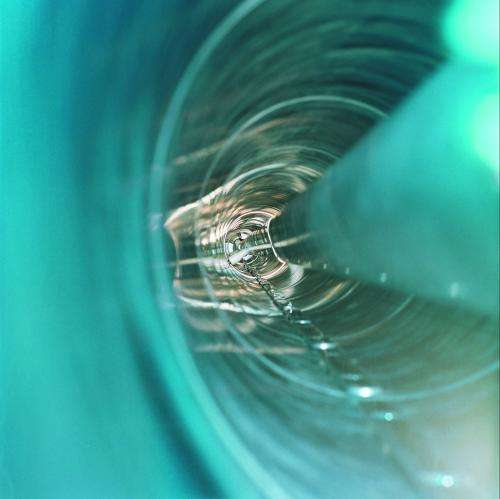High voltage at the world's tallest dam

Siemens is bringing electricity to the surface from the world's deepest arch-dam turbines. The dam of the Jinping-1 Hydropower Station in China's Sichuan province is 305 meters tall; the turbines are located 230 meters deep. The facility will have a total power output of 3.6 gigawatts. In order to transport this huge amount of energy up out of the mountain, Yalong Hydro is using gas-insulated transmission lines (GIL) from Siemens. This technology is especially well suited for the transmission of large amounts of electricity in restricted spaces.
Gas-insulated tubular lines can transmit up to 5,000 amperes at up to 550 kilovolts (kV). Every line consists of two concentric aluminum tubes. The space between the inner conductor and the earthed outer tube is filled with insulating gas. GIL systems not only transmit huge amounts of electricity in very restricted spaces, they are also fireproof - unlike standard power cables. As a result, GILs are a safe and easy-to-install solution for the transmission of electricity out of underground power stations or tunnels. The Jinping-I transmission line consists of a total of three parallel GIL systems, each of which has three monopolar tubular lines that lead vertically up at the dam.
Each system can transport 2,200 megavolt-amperes of output at 550 kV. Including the connection to the overhead power line, Siemens installed a total of 3.2 kilometers of tubular transmission lines. For the assembly of the transmission lines, the company set up special dust-free welding areas offering cleanroom conditions at the dam construction site. The welded seams of the aluminum tubes have to be absolutely gastight to ensure a long service life for the transmission lines. An automated orbital welding technique is employed to connect the tubes, and ultrasound is used to check that all of the seams are gastight.
GIL technology has been used for decades. In 1975 Siemens installed its first GIL system at the Wehr hydropower station in the Black Forest. This line is still in operation. In addition to a high transmission capacity and level of safety, GIL systems also have lower transmission losses because the effective conductor cross-section is larger than that of overhead lines and cables. Another advantage of GILs is their good electromagnetic compatibility (EMC), because the conductor current induces an equivalent countercurrent in the housing. As a result, the electromagnetic field is negligible outside the GIL, which means that no electromagnetic shielding is needed even for EMC-sensitive areas (e.g. near residential areas, air surveillance systems, or computer centers). GILs solve the transmission problem that arises whenever overhead lines cannot be built due to structural, electrical or environmental reasons. In this way, they also help make Germany's energy transition possible.
Provided by Siemens





















